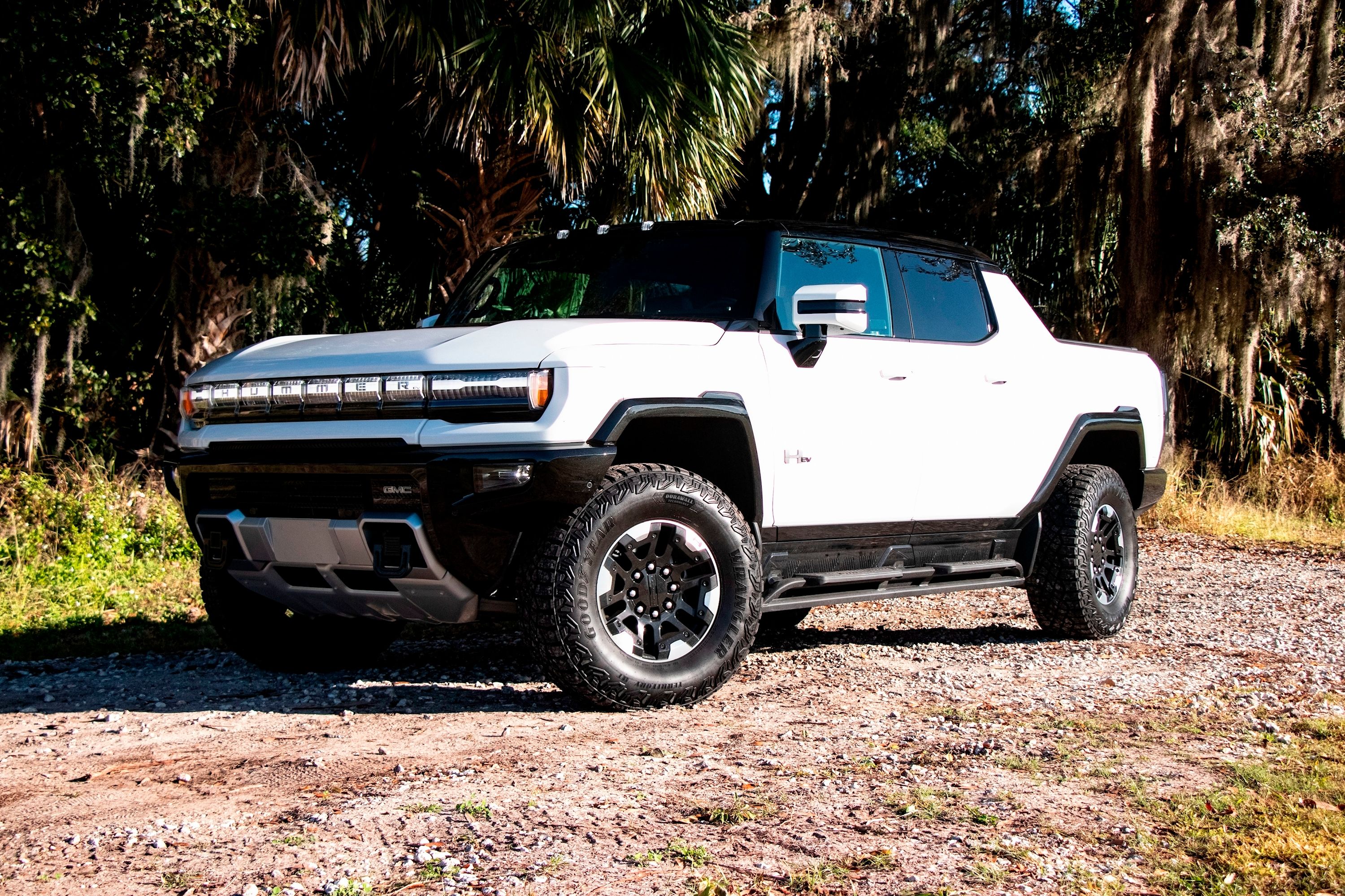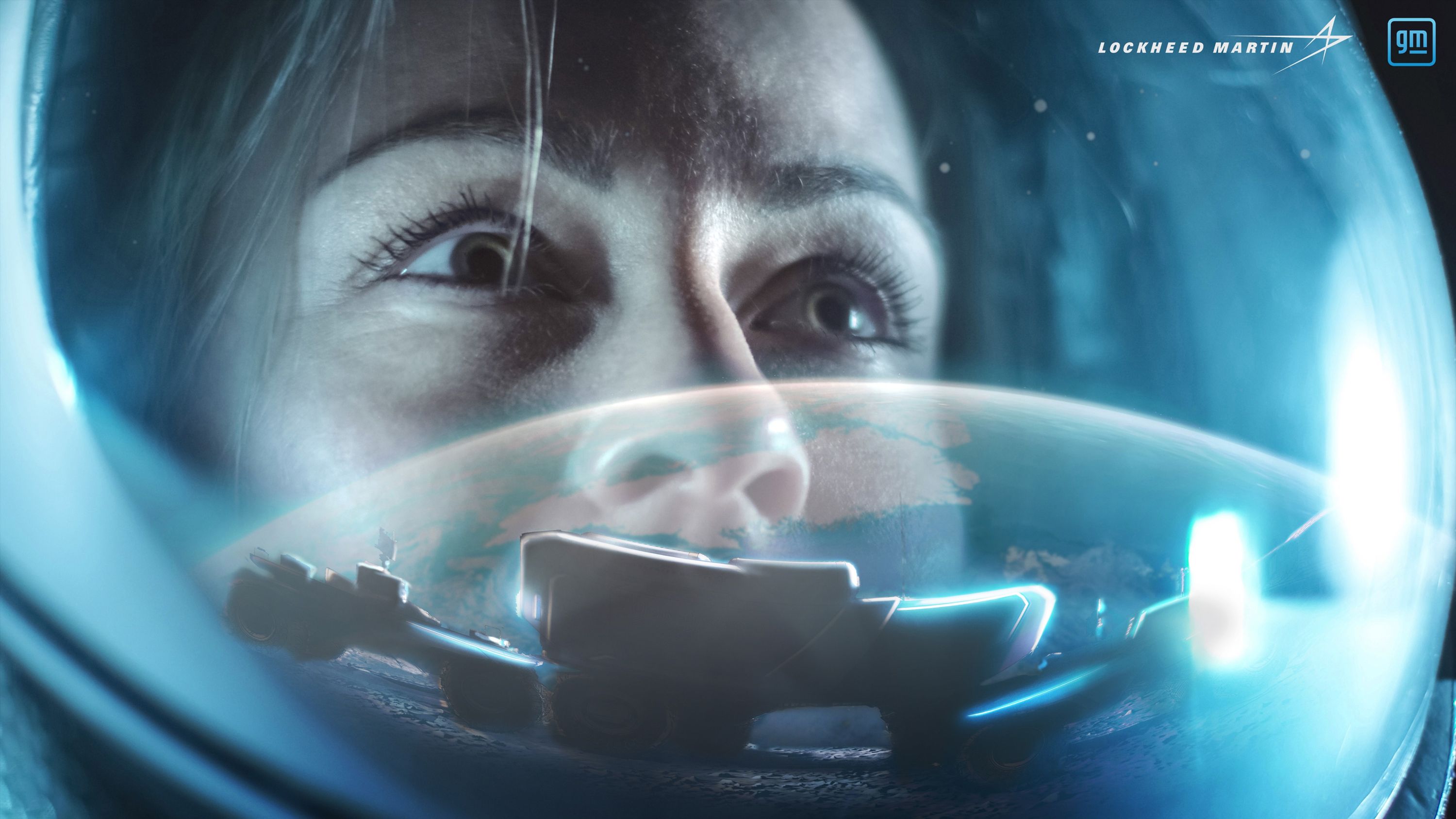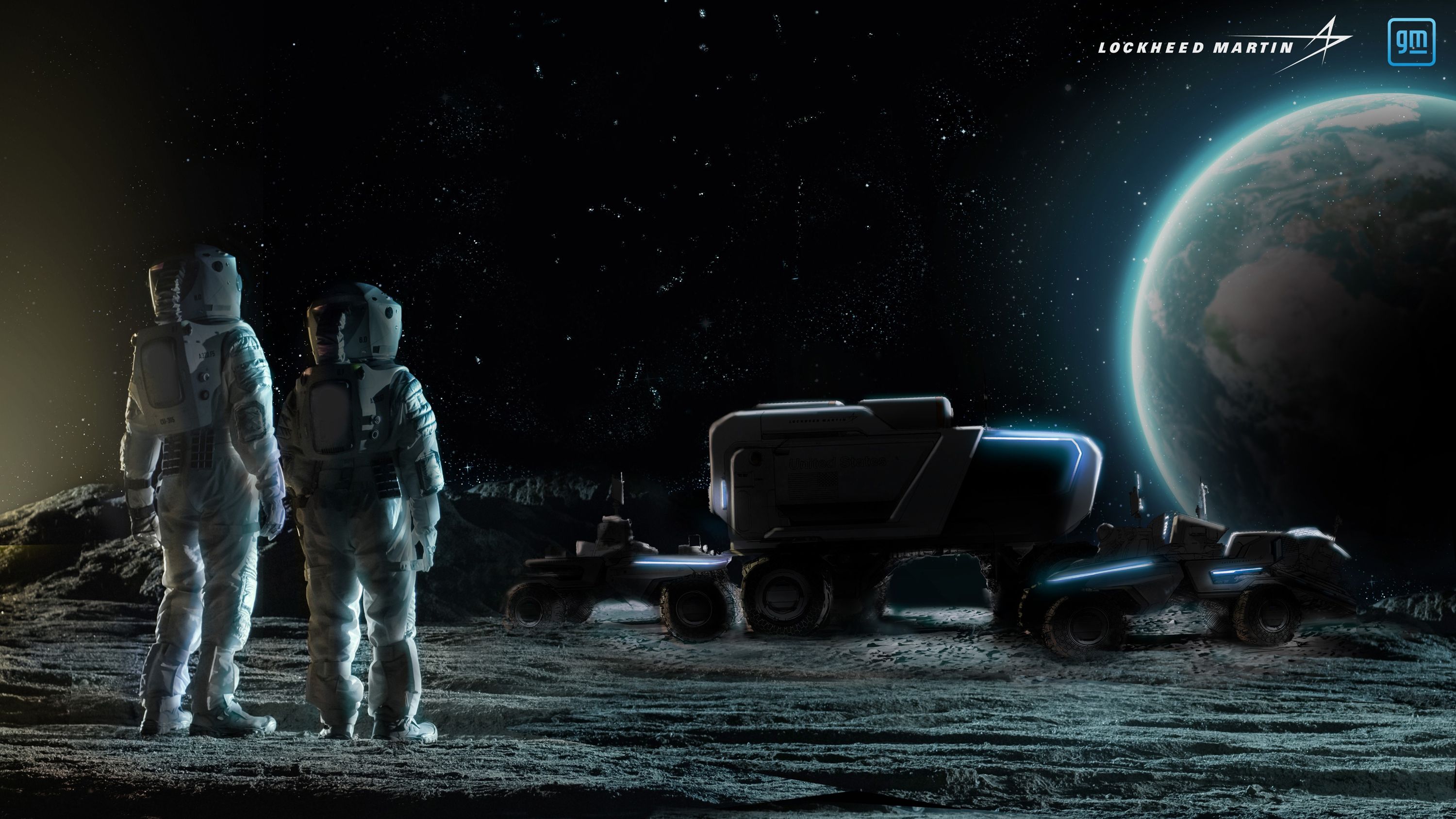
Two of the biggest names in the world, General Motors and Lockheed Martin, are teaming up to create the next generation of lunar roving vehicles for the upcoming NASA Artemis project. It will be the first time America has been to the moon since 1972, and it looks like they'll have some GM tech in tow. Unfortunately, it won't be the new Hummer EV, because with barely any gravity and no air resistance, that sucker could literally fly.
According to the brief, NASA is looking for GM and Lockheed help on how to develop an unpressurized vehicle that will carry a couple humans across the lunar surface, "extending the exploration range of Extravehicular Activity (EVA)," with the goal of launching the first Lunar Terrain Vehicle potentially as early as 2024.
NASA also says that it "has identified key LTV-required capabilities that may also have potential commercial applications." That includes electric vehicle systems, autonomous driving in high contrast lighting conditions and hazardous terrain, extreme environment tires and others.
"With safety being one of the most important factors, this was an easy decision for us to partner with Lockheed. This is the first alliance for this type of work, it gives us a phenomenal reason to come together, and bring those moon learning back to earth," said Alan Wexler, senior VP of growth at GM.
Both companies have experience in the field. Lockheed Martin has a 50-year history of working with NASA including the Orion spaceship, as well as numerous Mars and planetary crafts. GM manufactured, tested and integrated the inertial guidance and navigation systems for the Apollo Moon program. It also helped develop the electric Apollo Lunar Roving Vehicle (LRV) used on Apollo's 15-17 missions.
"General Motors made history by applying advanced technologies and engineering to support the Lunar Rover Vehicle that the Apollo 15 astronauts drove on the Moon," said Wexler. "Working together with Lockheed Martin and their deep-space exploration expertise, we plan to support American astronauts on the Moon once again."
The Apollo rovers were only expected to travel 4.7 miles from the landing site, but NASA expects the next-gen LTVs to go farther. The companies are shooting for about 40 miles of range, with a speed of just 5 mph. And they have to withstand desert-style heat and Arctic-style cold.
Like in the auto industry, there's a balance between what the scientists want and what the engineers can do.
"We need a relatively flat place to land, but scientists like boulders and craters, we need to get humans from the flat place to the boulders, plus equipment and samples to take back," said Kirk Shireman, vice president for the Lockheed Martin Lunar Exploration Campaign. "How do you take a sample of lunar ice and bring it home? That's why we're collaborating."
And these activities don't just benefit people in space. It all helps down here on Earth too.
"There are lots of applications, and we're looking at more than one vehicle," said Jeff Ryder vice president, growth and strategy for GM Defense. "There are lots of missions, lots of experiments to perform. Whether is traversing lunar surface, completing science missions, we see lots of applications for mobility. It all comes back to earth, our battery knowhow, it's valuable to our current portfolio and future road map."
The rover, made of lightweight and strong materials, though GM and Lockheed wouldn't say which materials, are still in the formulation phase. So they wouldn't say when we might get to look at it in real life. But you can bet we'll see more news by the end of this year.
"Surface mobility is critical to enable and sustain long-term exploration of the lunar surface," said Rick Ambrose, executive vice president, Lockheed Martin Space. "These next-generation rovers will dramatically extend the range of astronauts as they perform high-priority science investigation on the Moon that will ultimately impact humanity's understanding of our place in the solar system."
You can watch the entire press conference below.


